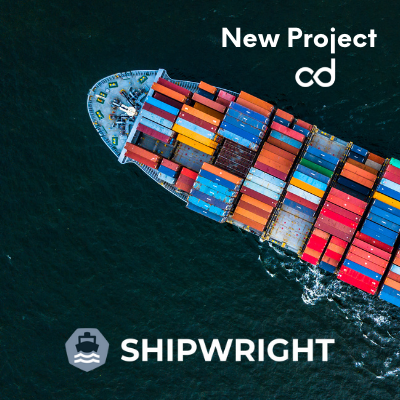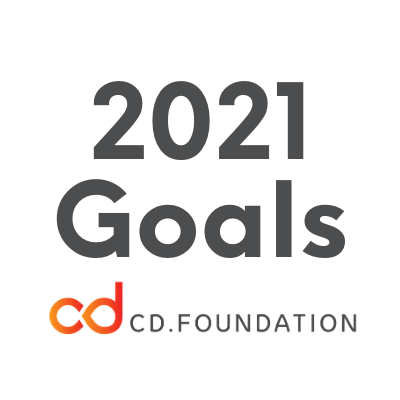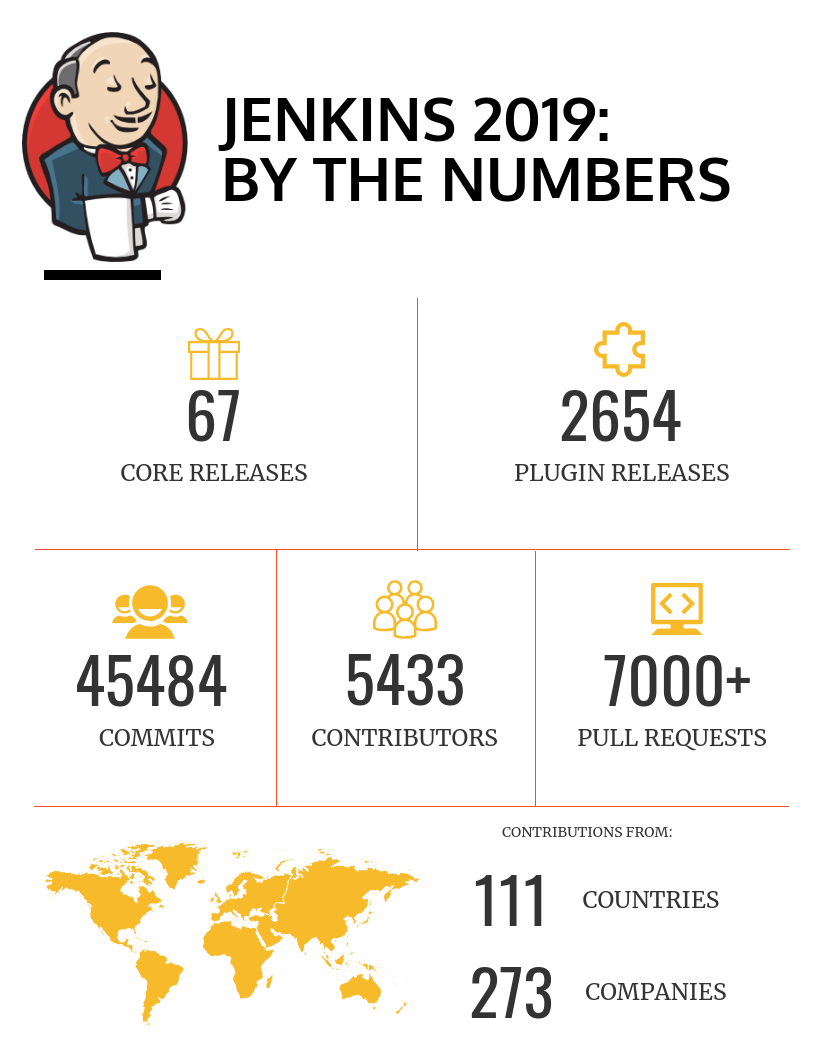





The Continuous Delivery Foundation (CDF), a vendor-neutral home for many of the fastest-growing projects for continuous delivery, is announcing Screwdriver as its newest incubation project. Screwdriver is a self-contained, pluggable service to help developers build, test, and continuously deliver software using the latest containerization technologies. Screwdriver was originally developed by Yahoo, now Verizon Media, as simplified interfacing for Jenkins. It was open sourced in 2016 and completely rebuilt to handle deployments at scale along with CI/CD goals.
Screwdriver ties directly into DevOps teams’ daily habits. It tests pull requests, builds merged commits, and deploys to any environment. It also defines load tests, canary deployments, and multi-environment deployment pipelines with ease.
Begin contributing to Screwdriver today. Pull requests are always welcome. Start by browsing the Screwdriver contributing guide.
“The CD Foundation welcomes Screwdriver. We believe Screwdriver is off to an excellent start, and we’re excited to be working together. By joining the CD Foundation, Screwdriver will be able to scale more quickly, taking greater strides forward in development and deployment,” said Dan Lopez, CDF program manager. “With so many supported integrations, Screwdriver provides the openness and flexibility that DevOps teams require.”
“The Screwdriver team and platform are heroes at Yahoo and Verizon Media for helping us run our massive software engineering operations at scale. Together we can make your CI/CD team heroes at your company too. We invite you to work with us in this neutral home for open source excellence.” Gil Yehuda, Sr. Director of Open Source, Verizon Media/Yahoo.
“It’s great to see Screwdriver joining the CDF. I know the people behind the project are passionate about the same thing we are, and together we can make a bigger impact faster. Open source has a proven unique ability of achieving that across project boundaries,” said Kohsuke Kawaguchi, Co-CEO at Launchable, Inc.
The CD Foundation provides a wide range of services to projects, and the first step is starting as an Incubation Project. Full details on bringing an open source CI/CD project to the CDF are available here.
“Our team is thrilled to join the CDF. Together with our partners from Yahoo! Japan and all our external contributors we’ll continue to rapidly deliver solutions which support developer workflows and interoperability with various Continuous Delivery solutions.” Jithin Emmanuel, Sr. Engineering Manager, Verizon Media/Yahoo and Product Owner for Screwdriver.
For more information on getting involved with Screwdriver, please visit:
CD Foundation Resources
Originally published in the Jenkins blog by Oleg Nenashev
Jenkins project congratulates all users and contributors with the New Year! Let’s take a look at some changes this year.

If you are interested to know more about Jenkins features introduced in 2019, stay tuned for a separate blog post about it (coming soon!).
Highlights above do not cover all advancements we had in the project. Below you can find slides from the Jenkins contributor summit in Lisbon. There we had project updates by officers, SIG and sub-project leaders. See the slide deck to know about: Jenkins Core, Pipeline, Configuration-as-Code, Security, UX Overhaul, Jenkins Infrastructure, platform support and documentation.
If this section seems to be too long for you, here is some infographic prepared by Tracy Miranda. As you may see, Jenkins is pretty big 🙂

Community. Over the past year we had 5433 contributors in GitHub repositories (committers, reviewers, issue submitters, etc.). We had 1892 unique committers who created 7122 pull requests and 45484 commits, bots excluded. Contributors represent 273 companies and 111 countries, 8% of contributors are recognized as independent. The most active repositories were Jenkins Core and jenkins.io. The most active month was October 2019 when we reached the record high number of contributions: 915 unique contributors, 124 of them were first-timers, thanks to Hacktoberfest!.
Jenkins core. In 2019 Jenkins core had 54 weekly and 13 LTS releases with several hundreds of notable fixes/enhancements. There was a login screen extensibility rework, many update manager and administrative monitors improvements. We also introduced support for user timezones, not speaking of emojis support 🥳. There was also a lot of housekeeping work: better APIs, codebase refresh, cleaning up static analysis warnings and removing deprecated features like Remoting CLI. The core’s components also got major updates. Only Jenkins Remoting got 11 releases with stability improvements and new features like support of inbound connections to headless Jenkins masters. There are also major incoming features like JEP-222: WebSocket Services support, UI look&feel updates, JENKINS-12548: Readonly system configuration support, Docker images for new platforms like Arm. To facilitate further changes we created a new Core pull request reviewers team and added 9 contributors there.
Plugins. There were 2654 plugin releases, and 157 NEW plugins have been hosted in the Update Center. Jenkins ecosystem got a lot of new integrations with Development and DevOps tools. Also, warm welcome back to the Scriptler Plugin which was depublished in 2017 due to security issues. If you are afraid about such plugin numbers and dependency management, there is a new Plugin Installation Manager CLI Tool which should help Jenkins users to manage plugins more efficiently.
Security. It was a hot year for the Jenkins Security Team. There were 5 security advisories for the core and 20 – for plugins. In total we disclosed 288 vulnerabilities across the project, including some backlog cleaning for unmaintained plugins. Script Security Plugin was the hottest plugin with 10 critical fixes addressing various sandbox bypass vulnerabilities. Plain text storage and unprotected credentials were the most popular vulnerability type 120 disclosures in 2019. It was made possible by hundreds of reports submitted by contributors after code surveys, special thanks to Viktor Gazdag who reported the most of the issues and became the Jenkins 2019 Security MVP (check out his story here).
Infrastructure. Got Jenkins? If so, you rely on Jenkins update centers, website and issue tracker. All these and many other services are maintained by the Jenkins Infrastructure Team. This year the team handled more than 400 requests in the bugtracker, and many other informal requests. In total, more than 30 people contributed to Jenkins infrastructure this year (website content is excluded). We also deployed 4 new services, migrated 7 services from Azure Container Service to Azure Kubernetes Service and updated many other services. More changes will happen in the next months, and we are looking for new INFRA team members!
Documentation. Only last quarter we had 178 contributors to Jenkins documentation. It includes jenkins.io and other documentation hosted on GitHub, Wiki is not included. There is also ongoing migration plugin documentation from Jenkins Wiki to GitHub (announcement). Since the beginning of the project in Sep 2019, more than 150 plugin were migrated, and they got significant documentation revamp during the migration. You can see the current status https://jenkins-wiki-exporter.jenkins.io/progress. We also work on introducing changelog automation in the project. 123 plugins have already adopted the new changelog tools, powered by Release Drafter. Also, we had more than 60 technical blog posts published on jenkins.io.
Configuration as Code was one of the most popular areas this year. Jenkins Configuration as Code Plugin had more than 30 releases with new features and bug fixes. More than 50 plugins have been also updated in order to offer better configuration-as-code support. As a result, the JCasC Plugin got massive adoption this year (from 2000 to almost 8000 installations), and now it becomes a de-facto standard for managing Jenkins as code. This year we also ran our very first CommunityBridge project devoted to JCasC Schema validation and developer tools.
Events and outreach programs. In 2019 we participated in multiple conferences, including FOSDEM, DevOps World | Jenkins World, SCALE. More than 40 Jenkins Area Meetups were organized across the world, and there were many other meetups devoted to Jenkins. We also kept expanding our outreach programs. In total we had 12 students who participated in Google Summer of Code, Outreachy and newly introduced Community Bridge. We also had the biggest ever Hacktoberfest with 664 pull requests and 102 participants. These outreach programs help us to deliver new features in Jenkins. For example, this year we added Multi-branch Pipeline support for Gitlab and a new Plugin Installation Manager Tool during GSoC, and Outreachy resulted in a new Audit Log Plugin.
Where did we get those stats? GitHub stats came from the CDF DevStats service. These stats include all repositories in the jenkinsci organization and most popular repositories in jenkins-infra, Jenkins X and other organizations/repositories within the project are not included. Other stats came from project reports, component changelogs, Jenkins usage statistics service, plugin releases history.
Year 2020 will be pretty busy for the Jenkins project. There are many long-overdue changes in the project, which need to happen if we want the project to succeed. As it was written Board elections blogpost, there are many areas to consider: UX revamp, cloud native Jenkins, pluggable storage, etc. In the coming months there will be a lot of discussions in mailing lists and special interest groups, and we invite all teams to work on their roadmaps and to communicate them in the community.
Next month we will participate in FOSDEM, and there will be a Jenkins stand there. On January 31st we will also host a traditional contributor summit in Brussels, where we will talk about next steps for the project, in terms of technical roadmaps and the project governance. If you are interested in Jenkins, stop by at our community booths and join us at the summit! See this thread for more information.
We also plan to continue all outreach programs. At the moment we are looking for Google Summer of Code 2020 mentors and project ideas (announcement), and we will be also interested to consider non-coding projects as a part of other programs like CommunityBridge. We also work on improving contribution guidelines for newcomers and expert contributors. If you are interested, please contact the Advocacy and Outreach SIG.
This blog post does not provide a full overview of what changed in the project. The Jenkins project consists of more than 2000 plugins and components which are developed by thousands of contributors. Thanks to them, a lot of changes happen in the project every day. We are cordially grateful to everybody who participates in the project, regardless of contribution size. Everything matters: new features, bug fixes, documentation, blog posts, well reported issues, Stackoverflow responses, etc. THANKS A LOT FOR ALL YOUR CONTRIBUTIONS!
So, keep updating Jenkins and exploring new features. And stay tuned, there is much more to come next year!
About the Author – Oleg Nenashev

Jenkins core maintainer and board member. Oleg started using Hudson for Hardware/Embedded projects in 2008 and became an active Jenkins contributor in 2012. Nowadays he leads several Jenkins SIGs, outreach programs (Google Summer of Code, Hacktoberfest) and Jenkins meetups in Switzerland and Russia. Oleg works for CloudBees and focuses on key projects in the community. GitHub Twitter Blog
Written by Tracy Miranda, CloudBees director of open source community and member of the CDF governing board
The CD Foundation (CDF) recently shared its 9 Strategic Goals. The second on the list is “Cultivate Growth of Projects.” This goal naturally leads us to ask ourselves the question: how do we measure the growth of our projects to know we are being successful?
There are many dimensions to open source projects. In order to sustain a project much more than code is required. The CDF helps with multiple essential services for project growth and sustenance. One of my favourite services is the CDF devstats site, which provides a wealth of data around the projects. CDF devstats, which is based on the CNCF devstats, gives indicators on community health and contributor statistics.
Example from Tekton, one of many dashboards and data sets available:
Sometimes we have distorted views of how well projects are doing – this can be down to a few things such as hype or public sentiment around a project. Sometimes newer projects are viewed as doing better than older projects. It is important to have a sense of how well your project is doing. While there are lots of different ways to do it, one method I really like is looking at the number of individual developers contributing to a project.
With CDF devstats I am able to take a snapshot of that data, and then see how the CDF projects stacked up against CNCF graduated projects.
The chart here shows a visualization of average developer contributions to each project based on data from the past one year. There are many caveats with the data. E.g. Which repos are included for each project may not be strictly equivalent. But what I like about it is that at a high level it gives an indication of the size of project contributions and how projects compare relatively.
I also like that it is all open – so you can verify the data and process for yourself, plus do your own analysis.
Kubernetes, as you might expect, is a powerhouse of a project with thousands of contributors. But actually Jenkins stacks up nicely in comparison with a healthy number of contributions – which is all the more significant considering it is a 15 year old project. Sustaining and growing community contributions year-on-year for 15 years is an incredible achievement. The other CDF projects, Spinnaker, Jenkins X and Tekton, are much newer but also coming along quite nicely. See this repo for links to data.
For me this is a nice snapshot to say we’re off to a good start here at CDF. Individual project growth will come down to each project’s community – but CDF will be working to provide key services and some of the less fun grunt stuff so project leaders can better focus on the important efforts of community building.